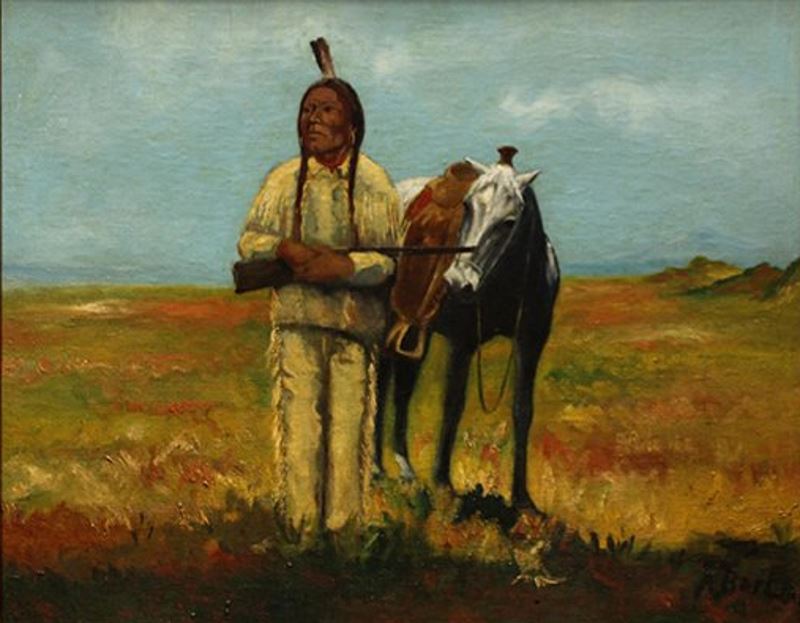When George Armstrong Custer led 700 men of the 7th Cavalry against the great village of Plains Indians on July 25, 1876, he was planning a massacre. He got one – but not the one he was planning. Despite the fact that his men were exhausted from a prolonged pursuit, upon locating Sitting Bull’s village by the Little Bighorn River, he ordered Major Marcus Reno to pursue 40 Lakota warriors they stumbled upon, and attack immediately from the south. Custer promised he would follow and reinforce them, but immediately moved north.
Reno’s men did not charge the village, but dismounted within range of it and established a firing line. The village was momentarily thrown into confusion as warriors organized themselves for its defense. Sitting Bull sent his nephew and another warrior out under a white flag to ask Reno to negotiate. Reno’s men shot and killed them both. Sitting Bull was mounted on his favorite horse, deciding what to do next when his horse was shot and killed beneath him. This was the trip-wire. He cried, “They have killed my favorite horse. It is like they shot me. Attack them!” Reno’s men were quickly forced to mount and flee back to the bluffs, and the safety of Major Benteen’s force. They could already hear the gunfire Custer’s men were exchanging with the Sioux and Cheyenne.
A good-sized public library would be needed to hold all the books written about Custer’s defeat that day. Custer was lionized for half a century as the embodiment of honor and bravery. He is now generally regarded as a blow-hard, a philanderer, and a narcissist of the first order who wasted the lives of soldiers and Indians for his own personal glory. As a reader, I find him hardly worth my time. I am much more interested in Sitting Bull.
I am interested in the fact that he finally got angry when they shot his horse. He took the shooting of his nephew calmly, but the killing of his favorite horse he took personally – as he said “It is like they shot me.” We all have our limits.
Our personal limit - that trip-wire which shatters patience and incites anger - communicates something essential about us. It identifies what we really care about. Some of us care about ourselves, therefore any annoyance or slight can be a trip wire. Some of us will continually accept personal insult with patience, but let someone insult spouse, or child, or parent, or friend, or country, and we say with Sitting Bull “Attack them!” For some the trip wire is injustice generally, or against a certain group specifically. We each have trip-wires and they identify our core values.
The word “anger” is only used of Jesus only once, In Mark 3.5. Jesus is being baited by the Pharisees to see if He will heal on the Sabbath. There is a man at the Synagogue with a withered hand. No one there cares about this man – his pain, his hardships, his limitations – they are just waiting to pounce. Jesus asks them if it is lawful to good or harm on the Sabbath, to save a life or to kill, but they are silent. Then “looking around in anger, grieved at the hardness of their heart” Jesus heals the man.
One might also argue that when Jesus cleanses the temple (Matthew 21.12-17, Mark 11.15-19, Luke 19.45-48, John 2.13-22) he is expressing anger – that His trip-wire has been sprung. Maybe. Let us assume so. What do these two incidents tell us about Jesus?
They tell us that cruelty towards others and irreverence towards God produce in Him a visceral response. His anger is never aroused by any attack upon himself. He is certainly not a man who lashes out at inconvenience and annoyance. We allow ourselves such large latitude for angry response to both. The Bible reminds us that “the anger of man does not accomplish the righteousness of God” (James 1.20). We know from observing Jesus, anger is only righteous when one cares most about righteousness. To control our anger we must choose a worthy trip-wire – we must care most about God and others. Otherwise anger will not be controlled.
